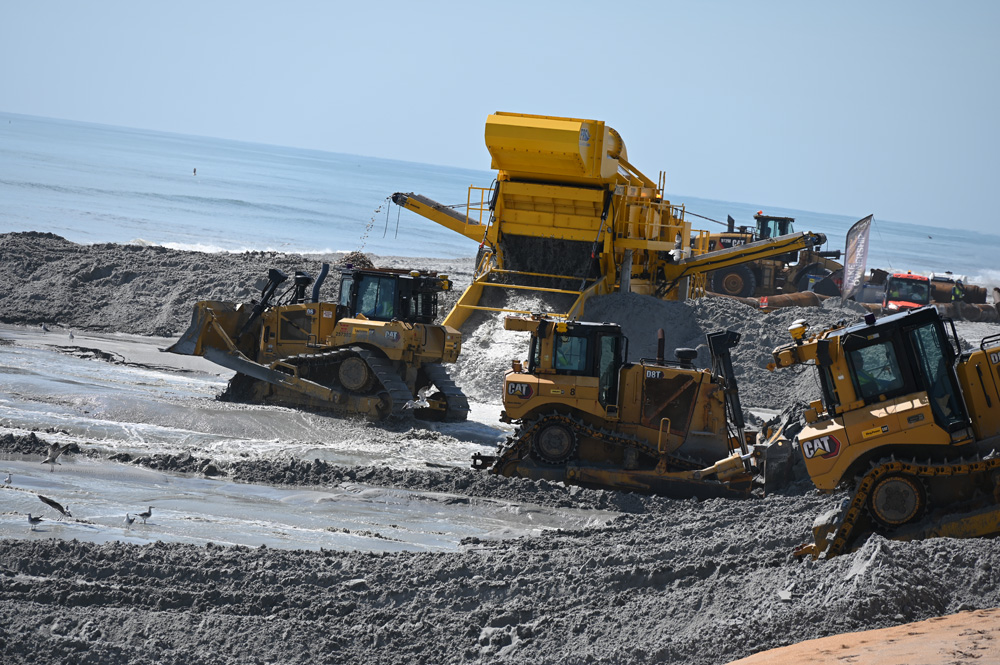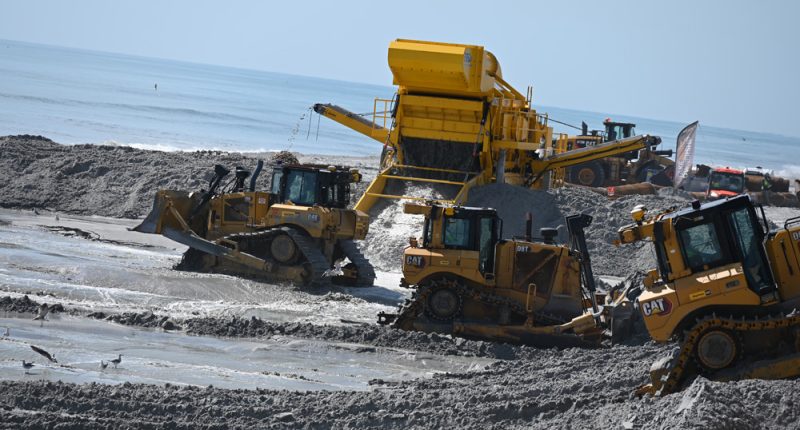
In somewhat of a setback for Flagler County government’s ambitious beach-management plan, the county’s own Tourist Development Council on Wednesday rejected a request for roughly $2.6 million over the next three years to help with reconstruction of the county’s beaches. Instead, the council voted to award half that amount, or roughly $1.3 million, depending on what the tourism sales surtax generates.
The vote was just a recommendation to the County Commission, which has final say on how much and how that tourism-tax revenue is spent. But Commission Chairman Andy Dance, who also chairs the TDC, said he does not intend to ask his colleagues to override the council’s recommendation.
The setback may not even be a setback after all, because the county may still apply for capital grants from the tourism council and end up making up the $1.3 million difference over the next three years, resulting in a favorable wash for the plan.
“It’s important to let the board know they’re helping the beach, just not in the way we’d originally hoped. But the support is there,” Dance said. “It comes across a little bit differently with the division of the funds.”
Still, the TDC vote sent yet another signal that local boards are not exactly embracing the county’s plan. Palm Coast and Bunnell had also signaled some hesitation to participate, though they have warmed up to the idea somewhat–but have yet to sign on. That signature is uncertain, and won’t be encouraged by the TDC’s action. A majority of county commissioners are also hesitant, if not opposed to the overall plan.
A motion by TDC member John Lulgjuraj, owner of Oceanside Beach Bar & Grill in Flagler Beach, to award the full amount to the county failed in a 5-3 vote, with Dance and Flagler Beach Commissioner Eric Cooley alone voting for it. A subsequent motion by TDC member Theresa Pontieri, a Palm Coast City Council member, to award half the money passed unanimously.
But for a moment, it looked as if the county’s request was in jeopardy of failing entirely.
“The public almost demands that there be a commitment from tourism as part of this overall piece,” Dance said. “This is one piece of a puzzle, and without one piece, I fear the entire puzzle is not going to be put together.” He added: “I don’t want to say this is the first domino that falls, but it very well could be that leads to the fall, which would be terrible.”
“There’s not going to be a fall. Motion. Second. Let’s vote,” Lulgjuraj said. Then came the 5-3 vote, followed by Pontieri’s motion.
“This still goes back to the county commission,” Dance said. “Ultimately, the county commission has the authority to do it. I think it is more impressive if there is a vote of support as we go through trying to stack the pieces of the puzzle together. It has more of an impact that all of the different areas are coming together in support of the plan.”
It is an elaborate but clear puzzle. County Administrator outlined it for the TDC in a lengthy presentation, as she has before every local government board and other organizations over the past months to build support for the plan. It amounts to a $120 million plan. One portion of the plan is to rebuild critically eroded beaches along 18 miles of shore, in addition to the U.S. Army Corps of Engineer project completed last summer in Flagler Beach. The second part of the plan is to secure permanent funding for beach maintenance and periodic renourishments every six years.
The U.S. Army Corps of Engineers project in Flagler Beach dropped 1.7 million cubic yards of sand dredged from a borrow pit offshore, rebuilding 3.5 miles of beach from North 7th Street to Gamble Rogers State Park, for $30 million paid for by the federal government and state grants. But future renourishments will be necessary to save that work and preserve the beach as built. The federal government will pay half the cost. Flagler County or Flagler Beach has to come up with the other half.
That half is non-existent for now, and Flagler Beach could never afford it on its own. Without it, the project dies, condemning the beach to erode again. That’s what the beach-management plan would pay for.
The county is preparing to rebuild 5.5 miles of beach from North 7th Street to Varn Park, for $36 million. It has the money in hand, drawn from state Department of Environmental Protection and state Department of Transportation grants. But that segment (like two other segments further north if and when they’re rebuilt), will also need to be maintained. Future maintenance costs are not covered. That’s also what the beach-management plan would pay for.
A central pillar of the beach management plan is to raise the sales tax by half a percent, generating over $10 million a year. The county would appropriate all of its share ($4.7 million) to the beach. It is asking Flagler Beach and Beverly Beach to appropriate all of their shares as well (combined $300,000). It is asking Palm Coast to allocate half its revenue ($2.7 million), as well as Bunnell ($100,000).
In addition to that, the county is asking the tourism council to approve shifting its capital fund to beach management for three years (and just three years), generating a projected $3.8 million over that span.
The Tourist Development Council oversees a $4.3 million budget. The revenue is drawn from a 5 percent sales tax supplement that applies to short-term rentals, including the county’s 16 hotels and motels, its 1,570 vacation rentals (in single-family homes, condominiums and duplexes), camping and RV parks.
The $4.3 million (the amount generated last year) is split three ways. Promotion of Flagler County, including advertising, accounts for 60 percent of the fund. Beach restoration accounts for 20 percent, and capital projects 20 percent. Capital projects may be any construction of renovation that would attract tourists. Recent TDC capital project grants have gone to the Southern Recreation Center in Palm Coast and the coming reconstruction of the boardwalk in Flagler Beach.
The beach fund generated $880,000 last year, as did the capital fund. It was a bit more the previous year. The amount fluctuates based on the number of visitors the county draws. In TDC accounts, that capital fund is often referred to by its number, Fund 1109.
“The beach is in critical condition. You know, that’s been well documented in here,” Cooley said. “So to me, it would be an easy bar to say, 1109 should go to that project versus non-critical projects.”










![Man Seen Naked, Screaming Before Police Find Designer Dead at Hamptons Yacht Club [Update]](https://celebjam.com/wp-content/uploads/2025/08/Man-Seen-Naked-Screaming-Before-Police-Find-Designer-Dead-at-260x140.jpg)